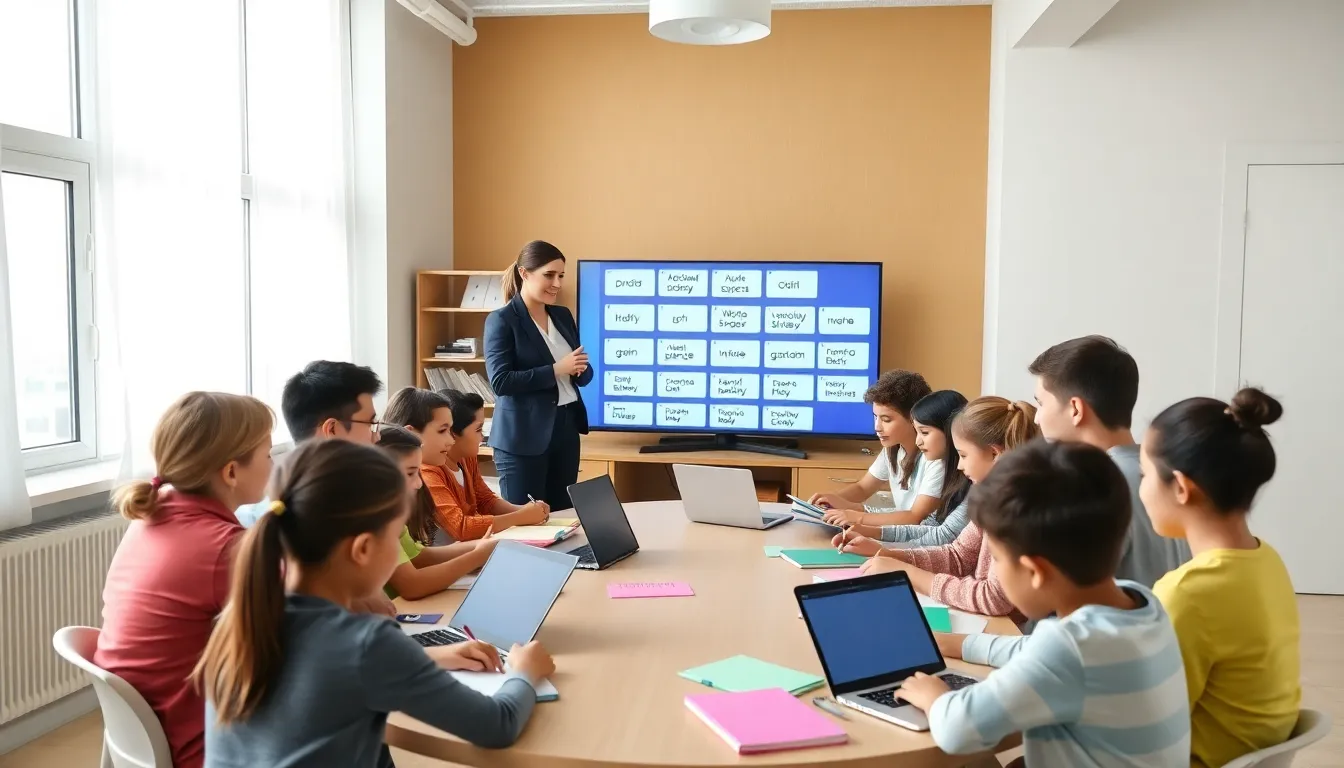In a world overflowing with information and routine, creative thinking stands out like a unicorn at a dog show. It’s the secret sauce that transforms mundane ideas into groundbreaking innovations. Whether you’re brainstorming for a new project or trying to solve a tricky problem, tapping into your creative side can unleash a whirlwind of possibilities.
Table of Contents
ToggleUnderstanding Creative Thinking
Creative thinking involves generating new and innovative ideas by viewing challenges from different angles. This cognitive process plays a crucial role in problem-solving and enhances one’s ability to adapt to various situations.
Definition of Creative Thinking
Creative thinking refers to the ability to approach problems and situations in novel and imaginative ways. It encompasses various skills such as brainstorming, lateral thinking, and divergent thinking. This mode of thought encourages individuals to step outside conventional boundaries, leading to unique solutions and perspectives.
Importance of Creative Thinking
Creative thinking fosters innovation in multiple fields, including business, education, and the arts. It empowers individuals to identify opportunities and devise effective strategies. Moreover, creativity enhances collaboration among team members, as diverse ideas spark discussion and drive projects forward. In highly competitive environments, creative thinking becomes essential for maintaining an edge over rivals.
Techniques to Enhance Creative Thinking

Enhancing creative thinking can lead to innovative solutions and unique perspectives. Several effective techniques can foster creativity in individuals and teams.
Brainstorming Methods
Brainstorming generates ideas through unfiltered group discussions. Participants express any thoughts without judgment, creating a supportive environment. Collaborators can utilize techniques like rapid ideation, where they write ideas quickly within a set timeframe, encouraging spontaneity. Group members might also engage in round-robin sessions, ensuring everyone contributes equally. This structured approach can lead to a wealth of diverse ideas. Additionally, combining ideas from different contributors can spark novel solutions.
Mind Mapping
Mind mapping visually organizes information to stimulate idea generation. Central concepts appear at the core, with branches extending to related subtopics. Creators can use colors and images to enhance engagement and memory retention. This method allows individuals to see connections between ideas clearly, aiding in the exploration of themes and concepts. By breaking down complex information, mind mapping simplifies the thought process, making it easier to build on existing knowledge. Frequent use of this technique can significantly boost overall creativity.
Applications of Creative Thinking
Creative thinking finds applications across various sectors, enhancing problem-solving and innovation.
In Education
Creative thinking plays a vital role in education by encouraging students to explore concepts deeply. Teachers can incorporate project-based learning, allowing students to tackle real-world challenges, fostering critical thinking. Innovative teaching methods, like gamification, engage students and facilitate learning through creativity. Encouraging discussion and collaboration among peers promotes diverse perspectives, enriching the educational experience. Additionally, integrating arts into the curriculum helps students express ideas imaginatively, reinforcing their grasp of complex subjects. This approach nurtures a love for learning while developing essential skills, preparing students for future challenges.
In Business
Creative thinking is essential in business for driving innovation and maintaining competitiveness. Companies implement brainstorming sessions that allow employees to contribute freely, generating a pool of ideas. By fostering a culture of creativity, organizations can adapt to market changes and identify new opportunities. Design thinking methodologies encourage teams to focus on user experiences, resulting in enhanced product development. Moreover, creative problem-solving techniques empower employees to approach challenges from different angles, leading to effective solutions. Collaborations between departments stimulate fresh ideas, ultimately driving growth and success in the ever-changing business landscape.
Challenges to Creative Thinking
Creative thinking faces various challenges that hinder innovative processes. Identifying these obstacles helps in overcoming them and fostering creativity.
Common Barriers
Several barriers impede creative thinking. Fear of failure often stifles idea generation, as individuals hesitate to present unconventional thoughts. Rigid organizational structures can limit spontaneity and discourage outside-the-box thinking. Time constraints frequently force quick decisions, leaving little room for exploration. Additionally, lack of diverse perspectives restricts idea flow, leading to homogeneous solutions. Groupthink may occur, causing teams to conform to common beliefs rather than encouraging unique viewpoints. Identifying these common barriers assists in strategizing for enhanced creativity and innovation.
Overcoming Obstacles
Overcoming challenges to creative thinking requires deliberate strategies. Encouraging an open-minded culture facilitates the sharing of diverse ideas without judgment. Creating safe spaces for discussions nurtures an environment where individuals feel comfortable expressing unconventional thoughts. Allocating time for brainstorming sessions invites spontaneous creativity and relaxation. Incorporating team-building activities promotes collaboration, allowing multiple perspectives to flourish. Emphasizing flexibility enables quick adaptation to new ideas and approaches. Implementing these strategies enhances creative potential and fosters a culture of innovation, crucial for growth and success in any field.
Creative thinking is a powerful catalyst for innovation and growth. By embracing diverse perspectives and encouraging open dialogue, individuals and organizations can unlock new possibilities. The techniques discussed can help overcome barriers and foster an environment where creativity thrives.
As the landscape of business and education continues to evolve, the ability to think creatively will remain a vital asset. It not only enhances problem-solving capabilities but also nurtures collaboration and adaptability. Cultivating this skill is essential for anyone looking to make a meaningful impact in their field. The journey of creative thinking is ongoing and holds the potential to transform challenges into opportunities.








